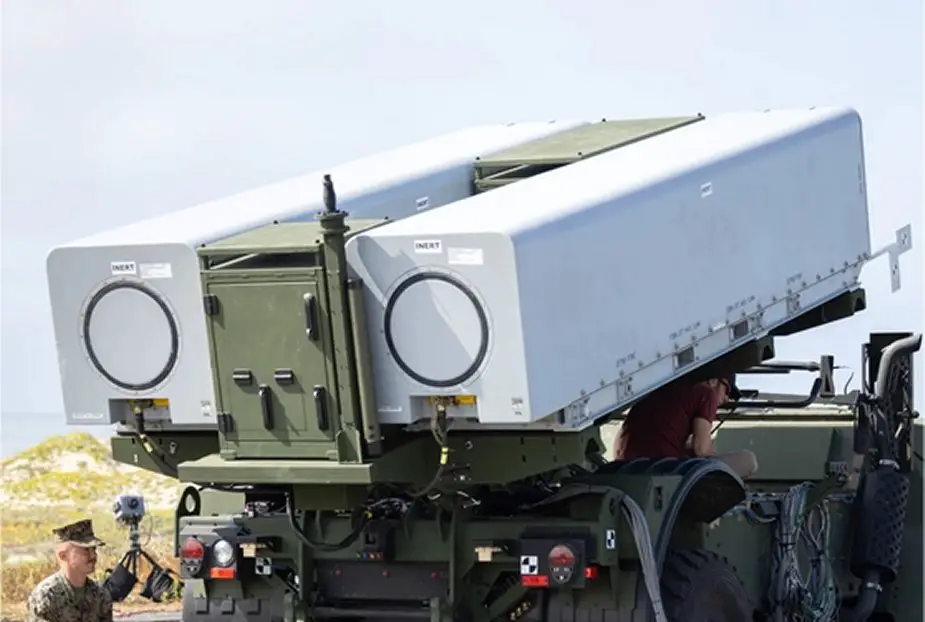Breaking news
American Marines now have coastal batteries as part of NMESIS program.
On 21 July 2023, the 11th Marine Regiment established the first battery of long-range missiles. In response to the challenges posed by China in the Indo-Pacific region, the United States Marine Corps unveiled the strategic plan "Force Design 2030" in March 2020. The plan aimed to return to the fundamentals that earned the Marine Corps its reputation, particularly during World War II, and shift away from counter-insurgency operations and occasional interventions, as seen in the past three or four decades.
Follow Navy Recognition on Google News at this link
 11th Marines to fire missile with NMESIS Ground Based Launcher (Picture source: United States DoD )
11th Marines to fire missile with NMESIS Ground Based Launcher (Picture source: United States DoD )
Emphasizing key technological innovations and relinquishing certain "historical" capabilities, such as tanks, the focus was on maritime warfare, denying adversaries access to seas, and ensuring the freedom of action for American forces, as explained by General David Berger, the Marine Corps commander at the time.
Central to the "Force Design 2030" plan is the concept of Expeditionary Advance Base Operations (EABO), which seeks to equip the Marine Corps with a land-based anti-ship capability as part of an integrated naval anti-surface warfare campaign, aimed at denying adversaries access to strategic maritime zones. It also aims to develop long-range strike capabilities.
As a result, the Marine Corps launched the NMESIS program (Navy and Marine Corps Expeditionary Ship Interdiction System), utilizing the Naval Strike Missile (NSM) as its anti-ship missile of choice. Two of these missiles, with a range of at least 200 km, are launched from the ROGUE-Fires, an unmanned ground vehicle (UGV) developed by Oshkosh based on the Joint Light Tactical Vehicle (JLTV). The ROGUE-Fires incorporates a remotely operated control system. This capability was successfully demonstrated during maneuvers conducted by the US Navy in August 2021.
Regarding long-range strike capability, the Marine Corps relies on the M142 HIMARS (High Mobility Artillery Rocket System) and the Long-Range Missile (LMSL) project. The LMSL extends the NMESIS concept by installing an Mk.41 vertical launch system on a ROGUE-Fires vehicle to launch Tomahawk Block V cruise missiles, as well as "Maritime Strike Tomahawk" missiles with a range of 1600 km. The latter is capable of detecting, tracking, and homing in on enemy vessels through their electromagnetic emissions.
On July 21, 2023, the Marine Corps announced that the 11th Marine Regiment had successfully established the first battery of long-range missiles, equipped with 16 Tomahawk Block V missile launchers.
If the NMESIS program is carried out as intended, the U.S. Marines will have a total of 108 NMESIS systems by 2025, equating to 216 Naval Strike Missiles loaded in ready-to-launch missile containers on unmanned JLTVs, without the need for reloading.


























